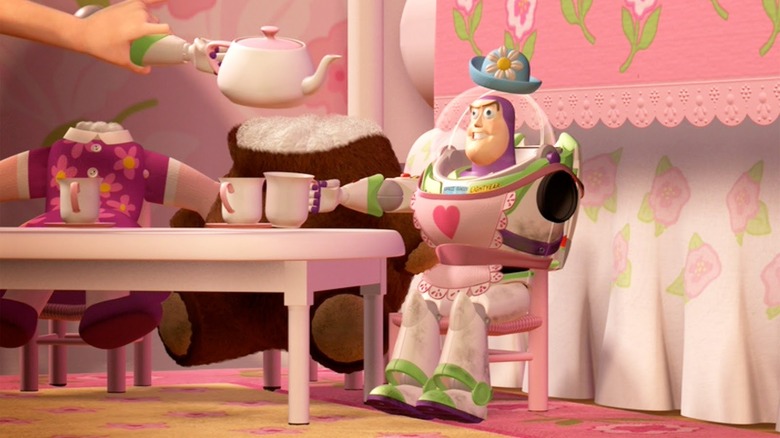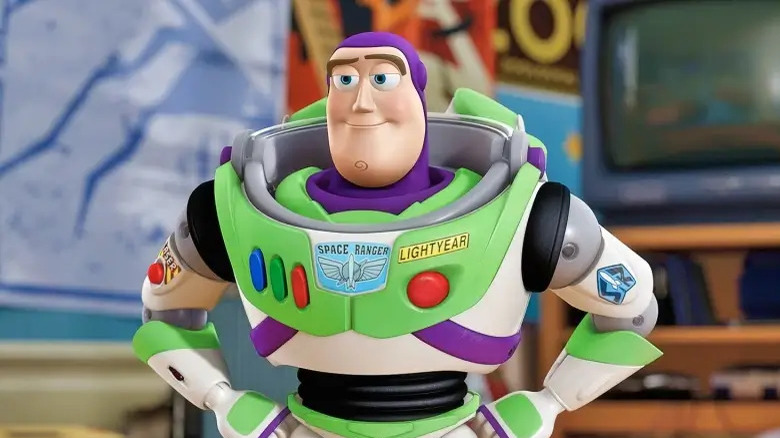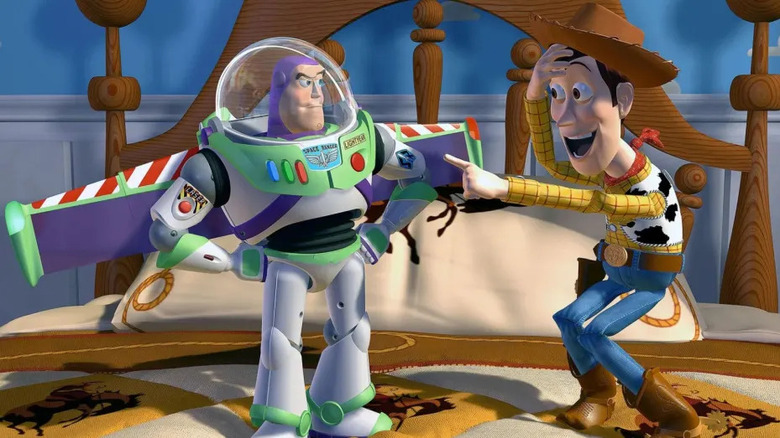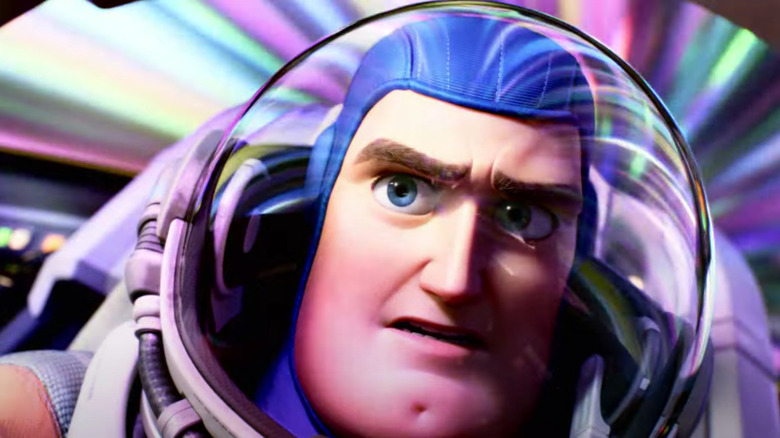
If stories of mega media corporations losing out on unfathomable fortunes make you feel all warm and fuzzy inside, then you're gonna love this one. Here is the story of how Disney's inability to put equal faith into all of their creations coupled with a few big wigs being overly presumptuous about consumer tastes led to a "Toy Story" themed financial fiasco that precedes their latest one by nearly 30 years.
Computers Are Scary

Believe it or not, Disney thought "Toy Story" would be an absolute flop at worst, and a small niche success at best. The powers that be never anticipated that the computer animated film would become the massive hit that it is today mainly because of a completely different film that is narratively and aesthetically dissimilar from "Toy Story" in every way: the 1982 sci-fi adventure, "Tron."
Despite the fact that the two movies only have the use of computer animation in common, this was enough to scare off toy manufacturers from committing to large orders of "Toy Story" merch. This sentiment is expressed in several news stories at the time covering the resulting toy debacle:
"But toy manufacturers were scared by the phrase "computer animation". It sparked memories of Disney's futurist 1982 adventure Tron, which ranks as one of the company's biggest flops. The prevailing view among toy manufacturers was that people don't like the hard images of computer animation and would stay away from the picture in droves."
In addition to the "Tron" based hesitancy, Anne Osberg, who served as the president of Disney Consumer Products at the time, admitted that she didn't feel merchandise of "Toy Story" characters could hold a candle to Disney icons like Mickey Mouse and Winnie the Pooh, or with popular non-Disney characters, saying, "Unfortunately, I saw Woody as a cartoon-show Howdy Doody from my brother's youth. And I saw Buzz as not competitive with Teenage Mutant Ninja Turtles" when discussing the issue with the Wall Street Journal in 1999.
Little Supply, Big Demand

This line of thinking led to a massive toy shortage when "Toy Story" became a hit with audiences despite the lack of faith from Disney and its toy partners like Mattel. Children wanted their own Buzz Lightyear dolls, and parents were eager to make those dreams come true. Unfortunately, there just weren't enough delusional space rangers to go around.
Before "Toy Story" hit theaters, Disney was having trouble trying to find a toy manufacturer willing to take on the perceived risk of fulfilling the "Toy Story" merchandise order that Mattel and other large brands decided to pass on. Ultimately, Thinkway, a comparably small Canada-based manufacturer, stepped up to fulfill Disney's Woody and Buzz order, but they were unprepared for the demand that spawned during the 1996 holiday season, leading to an inadequate supply of coveted Buzz Lightyear dolls. Apparently, the supply and demand disparity was so great that opportunists were selling the dolls at a 400% markup -- $100 for a toy with a retail price of $25.
One major reason why Thinkway was unable to produce enough "Toy Story" toys was that it was given a much shorter timeframe than average to work with. At the time, manufacturers were typically given around 18 months before a film's release date to complete an order, but Thinkway was given a mere five months. To make matters worse, they were operating under the assumption that children would gravitate toward Woody rather than Buzz, although the opposite turned out to be true. It was reported that only around 50,000 Buzz Lightyear toys were created while at least 200,000 Woody dolls were produced. The resulting loss was estimated to be around $300 million.
History Repeats Itself, Kinda

So that's the story of how The Mouse lost out on millions in sweet, sweet toy sales. "Toy Story" ended up becoming such a hit that it spawned several sequels and increasingly mind numbing meta lore thanks to the 2022 scifi adventure film "Lightyear." It's not unreasonable to assume that Disney learned to bet on Buzz after the initial toy shortage debacle, but there's something to be said for overdoing it.
Since the "Toy Story" franchise has become such a cash cow for Disney, "Lightyear" was expected to become yet another well loved hit. In fact, despite sending "Turning Red" and several of its other fantastic and well-received animated movies straight to streaming platforms rather than giving them proper theatrical releases, Disney's faith in the ability of Toy Story-adjacent properties to generate sales led to "Lightyear" being the only one of their Covid-era animated films to be shown in theaters. Unfortunately, the "definitive origin story" of Buzz Lightyear is underperforming at the box office, leaving critics and audiences to wonder if there's a limit to "infinity and beyond."
Read this next: The 25 Best Kids' Movies Of All Time
The post How A Toy Story Merch Mistake Lost Millions Of Dollars For Disney appeared first on /Film.
0 Comments